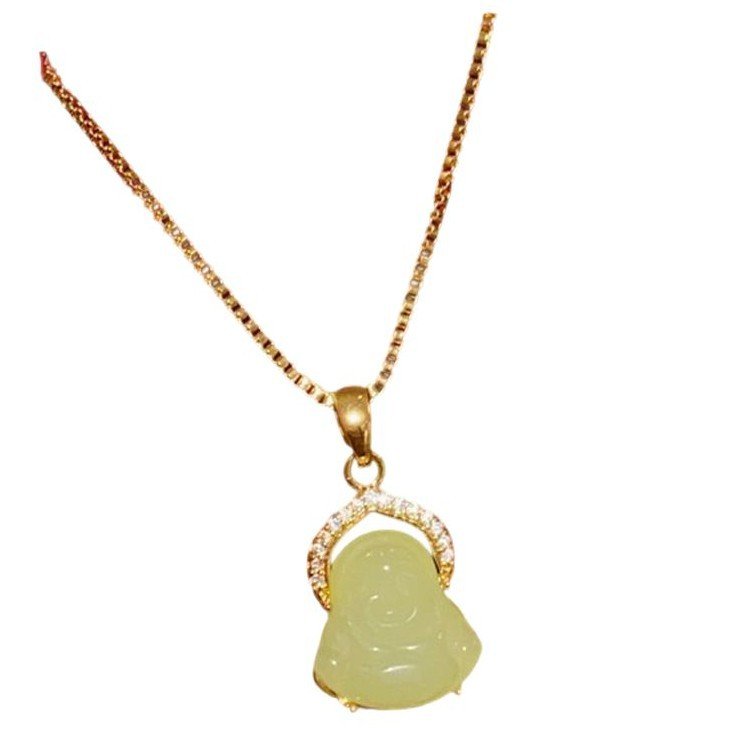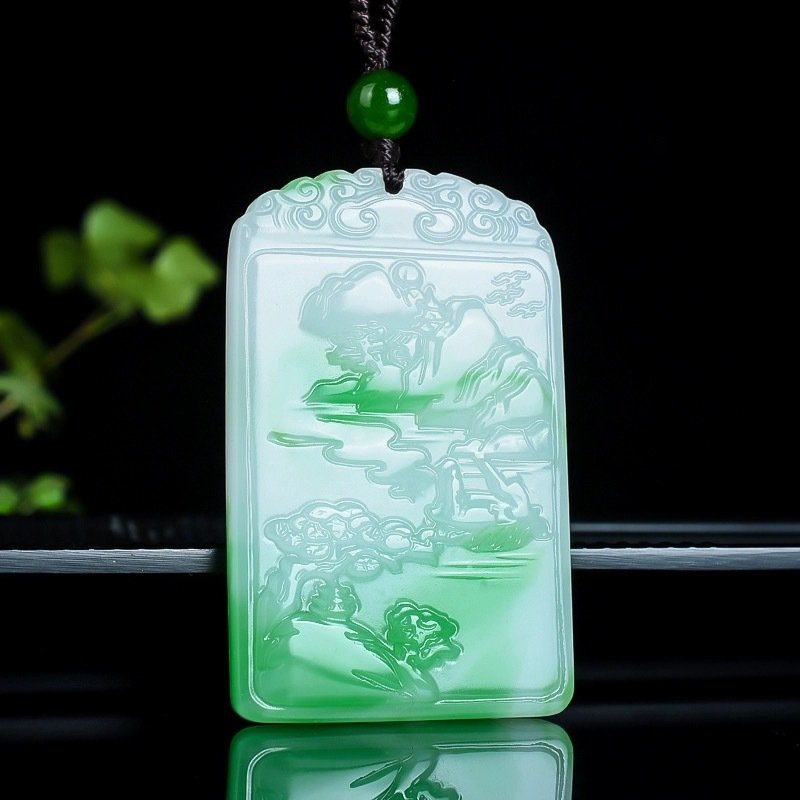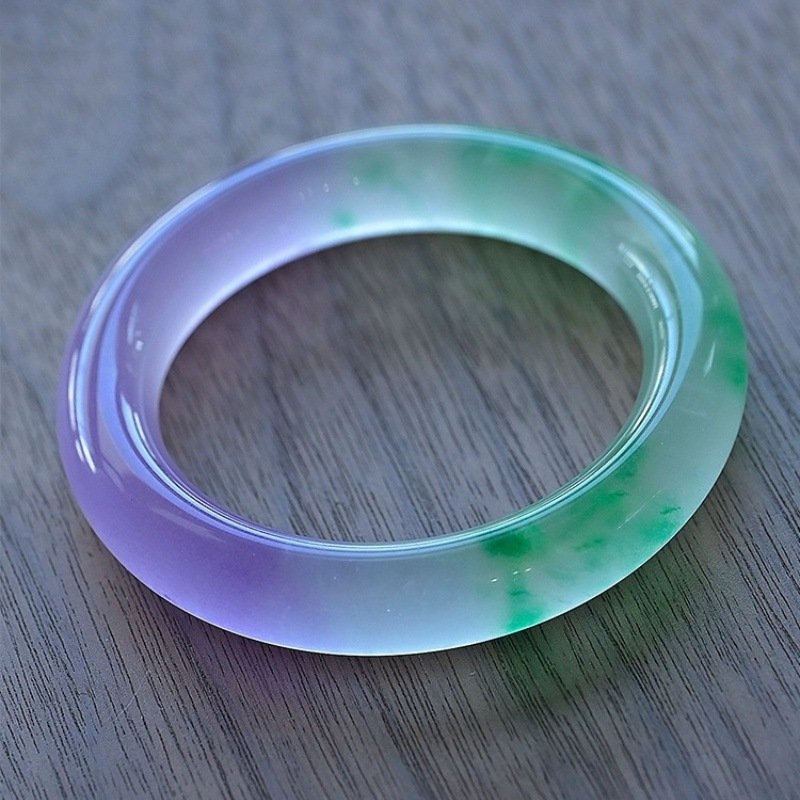Hetian Jade: The Ancient Treasure of Chinese Culture
For thousands of years, Hetian jade has been cherished as one of the most precious substances in Chinese culture, symbolizing purity, nobility, and virtue.
Introduction to Hetian Jade
Hetian jade, also known as "Hetian Yu" (和田玉) in Chinese, is a type of nephrite jade primarily sourced from the Kunlun Mountains in Xinjiang, China. This precious stone has been deeply interwoven with Chinese civilization for more than 8,000 years, representing not just material wealth but also spiritual and cultural values. Often referred to as "the stone of heaven," Hetian jade holds a position of supreme reverence in Chinese culture that surpasses even gold and silver.
The traditional Chinese character for jade, "玉" (yù), is one of the oldest in the language, dating back to 2950 BC. It represents three pieces of jade threaded together, symbolizing virtue, beauty, and rarity. This character is so fundamental to Chinese culture that it forms part of the character for "country" (国) and appears in China's very name in Chinese—Zhongguo (中国).
Unlike other precious materials whose value lies mainly in their rarity or appearance, Hetian jade embodies profound cultural and philosophical meanings. It has been used in imperial ceremonies, religious rituals, fine art, and personal adornment throughout Chinese history, carrying with it the weight of tradition and the essence of Chinese aesthetic sensibility.
Historical Significance
The history of Hetian jade stretches back to the Neolithic period, approximately 7,000 years ago, when early Chinese civilizations began using this stone to craft tools, ceremonial objects, and ornaments. Archaeological discoveries have revealed jade artifacts from sites like Hongshan and Liangzhu cultures, demonstrating the early importance of jade in ritual and social contexts.
During the Han Dynasty (206 BCE-220 CE), Hetian jade gained particular prominence. The imperial court commissioned skilled artisans to create elaborate jade works, elevating the stone's status as a symbol of power and prestige. The Han dynasty also established the legendary Silk Road, which facilitated trade between China and Central Asia, making Hetian jade more accessible to the imperial court.
Confucius, the influential Chinese philosopher, defined eleven virtues of jade that mirrored the qualities of the ideal gentleman. He wrote: "The wise have likened jade to virtue. For them, its polish and brilliancy represent purity; its perfect compactness and extreme hardness represent intelligence; its angles, which do not cut, although they seem sharp, represent justice; the pure and prolonged sound that it gives when struck represents music."
Throughout the Tang, Song, Ming, and Qing dynasties, jade continued to hold its esteemed position. Emperor Qianlong of the Qing Dynasty was particularly fond of jade and wrote numerous poems about it, further cementing its cultural significance. During this period, the imperial workshops produced some of the most exquisite jade carvings in Chinese history, many of which remain treasured museum pieces today.
Geological Origins and Formation
Hetian jade's formation is tied to the dramatic geological history of the Kunlun Mountains in China's Xinjiang region. These mountains were formed over billions of years through intense tectonic activity, creating the perfect conditions for the metamorphic processes that produce nephrite jade.
Nephrite forms when rocks containing the mineral tremolite undergo metamorphism under high pressure and temperature conditions deep within the earth's crust. This process creates the distinctive interlocking fibrous crystal structure that gives nephrite its remarkable toughness and durability—qualities that made it valuable for both tools and art.
Genuine Hetian jade comes from two primary sources in the Hotan (Hetian) region: the White Jade (Yurungkash) and Black Jade (Karakash) Rivers. These rivers erode jade deposits from the Kunlun Mountains, with the flowing water naturally transporting and polishing the stones. Jade found in these rivers—known as "seed material" or "pebble jade"—is particularly prized for its natural surface patina and lack of internal fractures.
While the traditional source of Hetian jade is Xinjiang province, similar nephrite jade is also found in Qinghai, Russia, Korea, and other regions. However, collectors and connoisseurs generally consider the quality of Xinjiang Hetian jade to be superior to material from these other sources.
Types and Classifications of Hetian Jade
Hetian jade encompasses a variety of colors and textures, each with distinct characteristics and value. Traditional Chinese jade connoisseurship recognizes several primary types of Hetian jade:

A fine example of white "mutton fat" Hetian jade, the most prized variety
White Jade (Bai Yu)
The most coveted variety of Hetian jade is pure white, known as "mutton fat" jade (Yang Zhi Yu). This jade is distinguished by its creamy white color, translucency, and lustrous texture. The finest examples have a waxy, almost glowing appearance and are completely free from impurities or color variations. Historically, this type was reserved for imperial use and remains the most valuable variety of nephrite jade today.
Green Jade (Qing Yu)
Green Hetian jade ranges from pale celadon to deep spinach green. The color comes from the presence of iron compounds in the stone. While not as valuable as the white variety, high-quality green Hetian jade with good translucency and even coloration is highly prized for carvings and ornaments.
Black Jade (Hei Yu)
Black jade exhibits gray-black coloration due to the presence of graphite or carbon. Some specimens show attractive white or green veining or mottling against the dark background. This variety has gained popularity in contemporary jewelry design for its dramatic appearance.
Yellow Jade (Huang Yu)
Yellow to brown-toned jade derives its color from iron oxide compounds. This variety often occurs when surface water carries iron-bearing minerals into white jade, creating colors ranging from pale beige to warm honey tones. Yellow jade symbolizes wealth and good fortune in Chinese culture.
River Jade vs. Mountain Jade
Beyond color classification, Hetian jade is also categorized by its source:
- River Jade (He Liao Yu): Collected from riverbeds, this jade has undergone natural polishing through water erosion. It typically features a distinctive "skin" or patina that carvers often incorporate into their designs. River jade is generally more valuable because it has fewer internal flaws.
- Mountain Jade (Shan Liao Yu): Extracted directly from mountain quarries, this material often lacks the natural patina of river jade and may contain more fractures. However, it can be found in larger sizes, making it suitable for more substantial carvings.
Physical Properties and Qualities
Hetian jade's enduring appeal extends beyond its cultural significance to its remarkable physical properties. As a form of nephrite, it possesses several distinctive characteristics:
Key Properties of Hetian Jade
- Hardness: 6.0-6.5 on the Mohs scale, slightly softer than jadeite (6.5-7.0)
- Density: 2.90-3.03 g/cm³
- Composition: Calcium magnesium silicate (Ca₂(Mg,Fe)₅Si₈O₂₂(OH)₂)
- Crystal Structure: Interlocking fibrous crystals
- Luster: Waxy to greasy
- Fracture: Splintery to irregular
The most distinguishing feature of Hetian jade is its exceptional toughness—the resistance to breaking or chipping under impact. This is due to its interlocking fibrous microstructure, which makes it one of the toughest natural materials on Earth. This property made jade particularly valuable for tools in ancient times and contributes to its durability as an artistic medium.
High-quality Hetian jade exhibits a soft, smooth texture that feels pleasantly cool to the touch—a quality that the Chinese describe as "yu-run" (jade moisture). This tactile quality is so valued that connoisseurs often assess jade through touch as much as through visual inspection. When polished, fine Hetian jade has a subtle luster that appears to glow from within rather than reflecting light from the surface.
Another prized quality is the stone's translucency. The finest white jade allows light to penetrate several millimeters into the stone, creating a luminous effect. When held up to a strong light, thin sections of high-quality Hetian jade will transmit light, sometimes with a honeyed glow.
These physical properties combine to create a material that is not only visually beautiful but also satisfying to handle and resilient enough to be passed down through generations—contributing to its status as a material worthy of representing heaven itself in Chinese cosmology.
Cultural Significance and Symbolism

An intricately carved Hetian jade pendant featuring traditional Chinese symbols of longevity and prosperity
In Chinese culture, Hetian jade transcends its status as a mere gemstone to become a profound cultural symbol embedded with philosophical and spiritual meaning. The Chinese phrase "Gold has a price, but jade is priceless" (黄金有价,玉无价) reflects the unparalleled esteem in which this stone is held.
The connection between jade and moral virtue is deeply rooted in Chinese philosophy. Confucius identified eleven virtues embodied by jade: benevolence, justice, propriety, truth, credibility, music, loyalty, heaven, earth, morality, and intelligence. He observed that jade's warm, smooth texture represents benevolence; its translucency represents righteousness; its sound when struck represents wisdom; and its durability represents courage.
"The wise have likened jade to virtue. For them, its polish and brilliancy represent purity; its perfect compactness and extreme hardness represent intelligence; its angles, which do not cut, although they seem sharp, represent justice." — Confucius
Beyond its philosophical associations, jade plays crucial roles in traditional Chinese customs and beliefs:
Spiritual Protection
For thousands of years, jade has been believed to protect its wearer from harm and evil spirits. Jade bangles, in particular, are thought to absorb negative energy and even break to protect their wearer from disaster—a cracked jade bangle is sometimes seen as having sacrificed itself to save its owner.
Health and Longevity
Traditional Chinese medicine attributes healing properties to jade, believing it can balance the body's vital energy (qi) and promote long life. Jade massage tools and jade-infused water are still used in wellness practices today. The cool touch of jade is thought to reduce inflammation and balance internal heat.
Status and Power
Throughout Chinese history, jade represented authority and social status. The ancient Chinese buried their dead with jade ornaments, believing the stone would preserve the body and provide spiritual currency in the afterlife. Jade burial suits composed of thousands of jade pieces sewn together with gold wire were created for royal burials during the Han Dynasty.
Modern Cultural Significance
Even in contemporary Chinese society, jade retains its powerful cultural associations. Jade gifts are given at important life events, such as births and marriages. A jade bangle is often the first significant gift given to a baby girl, and jade jewelry remains a traditional wedding gift, symbolizing purity and a harmonious marriage.
The intimate relationship between jade and Chinese identity continues to this day, with the stone serving as a tangible link to thousands of years of cultural heritage. As one Chinese proverb states, "People nurture jade, and jade nurtures people" (人养玉,玉养人), suggesting a reciprocal relationship between the stone and its caretaker.
Carving Techniques and Craftsmanship
The art of carving Hetian jade represents one of China's most sophisticated artistic traditions, requiring extraordinary skill, patience, and cultural knowledge. Jade carving has been refined over thousands of years, with techniques passed down through generations of master craftsmen.
Carving Hetian jade presents unique challenges. Unlike softer materials, jade cannot be carved with metal tools alone. Traditionally, carvers used abrasives such as quartz sand with bamboo or wood tools to slowly wear away the stone. This labor-intensive process could take months or even years for complex pieces.
Modern jade carvers typically use diamond-tipped tools and high-speed rotary equipment, yet the fundamental approaches remain similar to those employed for millennia. The most skilled artisans understand how to work with the natural properties of each stone, accounting for its structure, color variations, and potential flaws.
Major Carving Techniques Include:
- Relief Carving (Yang Diao): Creating three-dimensional designs that project from a flat background, often used for pendants and decorative panels.
- Openwork Carving (Lou Diao): Cutting completely through the jade to create negative spaces, resulting in intricate lattice-like designs.
- Round Carving (Tuan Diao): Creating fully three-dimensional sculptures that can be viewed from all angles.
- Hollow Carving (Kong Diao): Hollowing out the interior of a piece while maintaining thin, sometimes translucent walls—an extremely challenging technique that showcases the carver's skill.
- Skin Carving (Pi Diao): Working with the natural "skin" or weathered exterior of river jade pebbles, incorporating this russet-colored layer into the design.
The most highly regarded jade carvings demonstrate the Chinese aesthetic principle of "hiding the effort" (藏巧于拙). Despite the immense labor involved, the finest works appear effortless and natural, with fluid lines and graceful forms that harmonize with the stone's inherent qualities.
Traditional motifs in jade carving include auspicious symbols from Chinese mythology, such as dragons, phoenixes, and qilin (mythical creatures), as well as natural elements like mountains, water, and plants. Each symbol carries specific cultural meanings and blessings. For example, bats represent good fortune, peaches symbolize longevity, and lotus flowers suggest purity and enlightenment.
Contemporary jade carving in China has seen a renaissance, with master carvers like Wu Desheng, Ma Hong Wei, and Yang Xi creating innovative works that blend traditional techniques with modern aesthetic sensibilities. These artists are expanding the boundaries of this ancient art form while maintaining its essential cultural foundations.
Hetian Jade vs. Jadeite
Although both Hetian jade (nephrite) and jadeite are commonly referred to simply as "jade," they are actually distinct minerals with different compositions, origins, and characteristics. Understanding these differences is crucial for collectors, jewelers, and enthusiasts.
| Feature | Hetian Jade (Nephrite) | Jadeite |
|---|---|---|
| Mineral Composition | Calcium magnesium silicate (tremolite-actinolite series) | Sodium aluminum silicate (pyroxene group) |
| Hardness (Mohs) | 6.0-6.5 | 6.5-7.0 |
| Crystal Structure | Interlocking fibrous crystals | Granular interlocking crystals |
| Primary Source | Hetian, Xinjiang, China | Myanmar (Burma) |
| Historical Use in China | Since Neolithic period (8,000+ years) | Since Qing Dynasty (17th-18th century) |
| Color Range | White, green, yellow, black, gray (more subtle) | Vibrant green, lavender, red, yellow, white, black |
| Translucency | Generally less translucent | Can be highly translucent |
| Texture | Waxy, smooth | Glassy, granular |
| Value Determinants | Whiteness, texture, lack of flaws | Color intensity, translucency, vibrancy |
Hetian jade (nephrite) has been treasured in China for thousands of years and represents the traditional Chinese conception of jade. Its appeal lies in its subtle beauty, cultural significance, and tactile qualities. The most prized Hetian jade is the pure white "mutton fat" variety that appears almost creamy in texture.
Jadeite entered the Chinese market much later, becoming popular during the Qing Dynasty when vibrant green "Imperial Jade" from Myanmar captivated Emperor Qianlong. Jadeite is known for its intense colors and translucency, with the vivid emerald green "Imperial Jade" (fei cui) commanding the highest prices on the international market today.
While jadeite generally fetches higher prices per carat on the international market due to its vibrant colors and greater rarity, exceptional Hetian jade specimens—particularly ancient carvings or fine "mutton fat" pieces—can command prices comparable to or exceeding those of jadeite. In China, the cultural and historical significance of Hetian jade often makes it more highly valued than jadeite, especially among traditional collectors.
The Chinese have different aesthetic standards for evaluating these two types of jade. Hetian jade is appreciated for its warm, tactile qualities and subtle beauty that reveals itself gradually to the knowledgeable observer. In contrast, jadeite is valued for its immediate visual impact, brilliant translucency, and vibrant colors. As the Chinese saying goes, "Jadeite for its color, nephrite for its virtues."
Market Value and Collecting

A museum-quality Hetian jade carving showcasing the material's natural luster and exquisite craftsmanship
The market for Hetian jade has experienced significant growth in recent decades, driven by increasing prosperity in China and renewed interest in traditional cultural heritage. As natural resources dwindle and demand grows, prices for high-quality Hetian jade continue to rise, making it both a cultural treasure and a potential investment.
Factors Affecting Value
Several key factors determine the market value of Hetian jade:
- Color and Texture: Pure white "mutton fat" jade with even coloration commands the highest prices, followed by even-toned green and other colors. The ideal texture is smooth, waxy, and uniform.
- Translucency: Higher translucency generally indicates better quality and commands higher prices, particularly for white jade.
- Source: River jade typically fetches higher prices than mountain jade due to its natural "skin" and typically fewer internal flaws.
- Size and Weight: Larger pieces of consistent quality are rare and consequently more valuable.
- Craftsmanship: Expert carving can significantly enhance a jade piece's value, particularly when the artisan skillfully works with the stone's natural qualities.
- Provenance: Historical pieces with documented origins, especially those associated with imperial collections or renowned artists, can command extraordinary prices at auction.
- Age: Antique jade carvings, particularly those from the Ming and Qing dynasties, are highly collectible and valuable.
Investment Considerations
Hetian jade has long been considered a store of value in Chinese culture, with high-quality pieces often appreciating over time. However, potential investors should consider several factors:
- The jade market requires specialized knowledge to navigate successfully. Novice collectors should study extensively or consult experts before making significant purchases.
- Authentication is crucial, as the market contains numerous treatments, imitations, and misrepresented materials.
- Liquidity can be limited compared to other investment assets, with the best returns typically realized over longer time horizons.
- Market trends can evolve, with preferences for certain styles, colors, or types changing over time.
For serious collectors, Hetian jade offers the potential for both cultural enrichment and financial appreciation. The Chinese tradition of "jade nurturing" (养玉) suggests that jade should be regularly worn or handled to develop a personal connection with the stone, enhancing both its appearance and its spiritual qualities. This philosophy embodies the idea that collecting jade is not merely about acquisition but about developing a relationship with a living cultural heritage.
Identifying Genuine Hetian Jade
With the high value of Hetian jade, the market has inevitably attracted imitations, treatments, and misrepresentations. Learning to identify authentic Hetian jade is essential for collectors and enthusiasts who wish to appreciate and invest in this precious stone.
Visual Inspection
Genuine Hetian jade has several distinctive visual characteristics:
- Natural, subtle color variations rather than perfectly uniform or overly bright colors
- Waxy rather than glassy luster when polished
- Subtle translucency that allows light to penetrate but diffuses through the stone
- Sometimes contains natural inclusions or structures that are consistent with its formation
Physical Tests
Several simple tests can help distinguish genuine Hetian jade:
- Temperature Test: Jade feels notably cool to the touch and warms slowly due to its high thermal conductivity.
- Hardness Test: Genuine jade cannot be scratched with a steel knife (though this test should never be performed on valuable pieces).
- Sound Test: When gently tapped, quality jade produces a resonant, musical tone rather than a dull sound.
- Weight Test: Hetian jade has a density of approximately 2.95-3.03 g/cm³, giving it a substantial heft relative to its size.
Common Imitations
Several materials are commonly used to imitate Hetian jade:
- Serpentine: Often sold as "new jade" or "Xiuyan jade," it's softer than true jade and often has a more greasy appearance.
- Marble: Can resemble white jade but is typically more coarsely crystalline and reacts to acid.
- Dyed Quartzite: May be colored to resemble green jade but lacks jade's toughness and unique texture.
- Glass and Plastic: These imitations may look convincing but fail basic tests for hardness, temperature, and sound.
- Treated Jade: Genuine but lower-quality jade that has been dyed, bleached, or polymer-impregnated to improve appearance.
Professional Authentication
For valuable pieces or significant purchases, professional authentication is recommended. Methods include:
- Gemological Testing: Refractive index, specific gravity, and spectroscopic analysis can definitively identify jade.
- Microscopic Examination: Reveals the characteristic fibrous structure of nephrite.
- Infrared Spectroscopy: Can detect treatments and identify the specific mineral composition.
- Certification: Reputable gemological laboratories can provide certificates of authenticity for jade specimens.
When purchasing Hetian jade, it's advisable to buy from established, reputable dealers who can provide provenance information and authentication certificates for their merchandise. Building relationships with trusted experts and educating oneself about jade's characteristics are the best defenses against misrepresentation in this specialized market.
Conclusion: The Enduring Legacy of Hetian Jade
Hetian jade represents far more than a precious stone in Chinese culture—it embodies a profound philosophical tradition, artistic heritage, and spiritual connection that has endured for thousands of years. From its geological formation in the remote Kunlun Mountains to its transformation through the hands of master carvers, Hetian jade carries the imprint of both natural forces and human creativity.
Its subtle beauty rewards the patient observer, revealing its qualities gradually through both visual appreciation and tactile experience. Unlike gemstones valued primarily for their brilliance or color, Hetian jade invites a deeper relationship, changing subtly with handling and age as it absorbs the oils from human contact—truly "nurturing" its owner as it is nurtured in return.
In an age of mass production and synthetic materials, the natural authenticity and cultural significance of Hetian jade offer a tangible connection to both the natural world and thousands of years of human civilization. Whether appreciated as fine art, personal adornment, or spiritual talisman, Hetian jade continues to bridge heaven and earth, past and present, material and spiritual—a truly timeless treasure worthy of its ancient title as "the stone of heaven."

Free BaZi Calculator: Unlock Your Four Pillars of Destiny
Free BaZi Calculator: Unlock Your Four Pillars of Destiny | Accurate Chinese Astrology Free BaZi Calculator: Unlock Your Four Pillars of Destiny Introduction: What is

Chinese Astrology Charts Complete Guide
Chinese Astrology Charts Complete Guide 2025: Da Liu Ren Symbols Decoded | Ancient Wisdom Meets Modern Psychology Chinese Astrology Charts Complete Guide: Where Ancient Wisdom
How to Wear Feng Shui Bracelet
How to Wear Feng Shui Bracelet: Complete Guide for Maximum Benefits Reading Progress: 0% 🎉 Congratulations! You’ve completed 25% of reading!Enjoy this fireworks celebration! Continue

Chinese Bracelets Feng Shui: Ancient Wisdom for Modern Energy Balance
Chinese Bracelets Feng Shui: Complete Guide to Energy Balance & Protection Chinese Bracelets Feng Shui: Unlock Ancient Wisdom for Modern Energy Balance In today’s fast-paced

Sword Soul: The Legendary Tale of Chinese Sword Heritage | Ancient to Modern
Sword Soul: The Legendary Tale of Chinese Sword Heritage | Ancient to Modern 剑魂 – Sword Soul The Legendary Tale of Chinese Sword Heritage 传承千年的中华剑道传奇

Red String Lore & Dragon Boat Festival: Myths, Meanings & Modern Uses
Red String Lore & Dragon Boat Festival: Myths, Meanings & Modern Uses Every year during the Dragon Boat Festival, millions of Chinese children wake up


